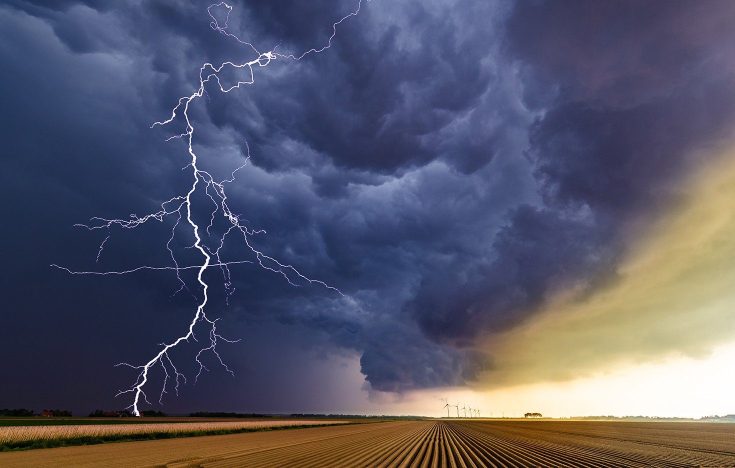Decarbonisation has garnered plenty of attention of late, partly fueled by the imminence and significance of the upcoming COP26 in November, which will be the first global summit since the landmark Paris Agreement’s measures officially took effect. China was also key in driving the decarbonisation momentum, announcing in 2020 a commitment to achieve carbon neutrality by 2060. This was quickly followed by similar commitments from South Korea and Japan.
While decarbonisation is critical and gaining momentum, we must not forget the other side of the climate action agenda – climate change adaptation. According to the latest United Nations Environment Programme Emissions (UNEP) Adaptation Gap Report, we are still headed towards a 3°C temperature rise. Even with the most ambitious decarbonisation efforts, some changes are already locked into planetary systems and bringing unavoidable consequences.
What is climate change adaptation?
The European Commission defines climate change adaptation as follows:
Adapting to climate change means taking action to prepare for and adjust to both the current effects of climate change the predicted impacts in the future.
From a climate risk management perspective, adaptation will be a vital element in the efforts to minimise climate risk.
Climate change impacts are getting increasingly “up close and personal” whether we like it or not. Last year, 2020, was one of the warmest years on record and over 50 million people globally have been directly affected by floods, droughts, storms or wildfires. Without adaptation, many highly populated and low lying Asian megacities are at risk of flooding and typhoons.
The cost of climate related disasters have more than quadrupled since the 1980s. Conservative predictions suggest that such events will become increasingly frequent which could lead to asset value losses and economic disruption. For example, extreme weather has cost China $30 billion a year since the 1990s.
Industries most at risk include insurance, agriculture, forestry, beverage, tourism, commercial fishing and energy, to name a few. Water shortages are threatening the beverage industry to the value of $247 billion and will limit the availability of cooling water for thermal power generation. Energy assets, buildings and infrastructure in low lying coastal areas are particularly vulnerable.
Unpredictable weather patterns have a direct negative impact in the long term production of renewable energy Ocean acidification and rising sea temperatures are impacting salmon, trout and shellfish habitat loss as high as 17% by 2030, diminishing populations. The trend of more frequent extreme weather events is driving up premiums and payouts, putting a financial strain on the insurance industry.

Adaptation and resilience is imperative. To combat these losses, we must accelerate the deployment of finance to mitigate climate-related risks.
Jonathan Ho, Associate, Sustainable Capital Markets APAC, BNP Paribas
The climate adaptation finance gap
According to the latest data from Climate Policy Initiative, total climate finance flows – including domestic and international, public and private flows – were estimated at $579 billion per year for 2017–2018. The overwhelming majority went to mitigation, with only $30 billion to adaptation. At the same time, annual adaptation costs in developing countries are estimated to be in the range of $140–300 billion by 2030. This means adaptation finance needs to increase five to 10-fold to meet the needs in developing countries alone.
Climate Bonds Initiative’s green bond database records that, amongst the global green bonds cumulatively issued to date, only a meagre 1.7% of the volume were channelled to finance climate adaptation and resilience activities.
Many public and private assets will need to adapt to withstand the effects of climate change. The financing of adaptation measures is particularly important for Asia due to the region’s significant infrastructure needs. The Asian Development Bank estimates that Asia must invest $40 billion per year through 2030 to adequately adapt to climate risk.
Investing in adaptation makes business sense
Despite the glaring finance gap, climate adaptation holds a solid business case for investment. The Global Center on Adaptation estimates the benefit-cost ratios of investing in climate adaptation to range from 2:1 to 10:1.
Separately, the Global Commission on Adaptation estimated that a $1.8 trillion investment in early warning systems, climate resilient infrastructure, improved agriculture, global mangrove protection and resilient water resources could generate $7.1 trillion in avoided costs and other social and environmental benefits.
Some key economies in Asia have already started taking action:
- Singapore has devised a $72 billion plan, to be implemented over the course of the century, to safeguard against rising temperatures and floodwaters, as well as a $300 million plan to climate-proof its drainage system
- In China, rural projects have helped farmers develop new maize varieties that are better adapted to drought and pests
- The Korean Green New Deal includes a plan of establishing AI-based water management systems in response to flooding and drought
- Tokyo Metro is investing in water ingress prevention and minimising flood-related damage in the subways through precipitation data analysis, as well as enhancing station facilities and emergency response for passenger safety
An emerging discussion is the role of nature-based methods as climate solutions. The UNEP Adaptation Gap Report 2020 finds that the protection, restoration and management of rivers, floodplains, peatlands, forests, and urban green and blue spaces can effectively address climate-related hazards of sea level rise, storm surge, intense precipitation, drought, and more. These solutions have the simultaneous effect of carbon absorption and decarbonisation – a true win-win solution for both mitigation and adaptation.
Financial Solutions for Climate Adaptation
New dedicated financial products such as climate resilience bonds could help issuers fill the adaptation finance gap via the capital market. Blended finance could also help de-risk private-sector investment in new technologies and climate-adaptive solutions.

It is crucial for the financial sector to step up to the climate adaptation need. Banks and investors should finance both private and public led climate adaptation projects and adapt their portfolios to a warming world.
Chaoni Huang, Head of Sustainable Capital Markets, APAC, BNP Paribas
The European Bank for Reconstruction and Development launched the world’s first dedicated climate resilience bond in September 2019, raising $700 million to invest in climate resilient urban infrastructure, climate adaptation transitions in business and commercial operations, and climate resilient agricultural and ecological systems. The five-year bond attracted demand from 40 investors in 15 countries. BNP Paribas was Joint Lead Manager for the innovative milestone transaction. Considering the broader climate emergency context, such transactions could and should be replicated.
A Conducive Market for Climate Adaptation Finance
As institutions and corporations start to adopt the risk management and disclosure practices recommended by the Task Force on Climate-Related Financial Disclosures (TCFD), the exposure and vulnerability of assets to climate risk will be increasingly clear. With greater transparency, investors will start to take measures to favour the financing of climate resilient activities, while investments with high climate impact vulnerability will become less attractive.
Simultaneously, as taxonomies develop, we will have further clarity on what defines an impactful climate adaptation activity. The EU taxonomy is signalling to investors that adaptation is consistent and in fact needed to meet the United Nations Sustainable Development Goals and Paris Agreement targets, and financing into these activities is in line with responsible investment strategies.
Many investors are also proactively seeking to address adaptation and resilience. The Institutional Investors Group on Climate Change, an alliance of approximately 275 investors with €35 trillion assets under management, has a mission of not just mobilising capital for the low carbon transition but also to ensure resilience to the impacts of a changing climate. The Principles for Responsible Investment is also increasingly providing more guidance and resources to its signatories on climate adaptation and resilience. In the midst of our “race to net zero”, we must not forget climate adaptation. The time for climate adaptation finance is now: the urgent need, the economic case, and the conducive market and policy environment. What are we waiting for?

